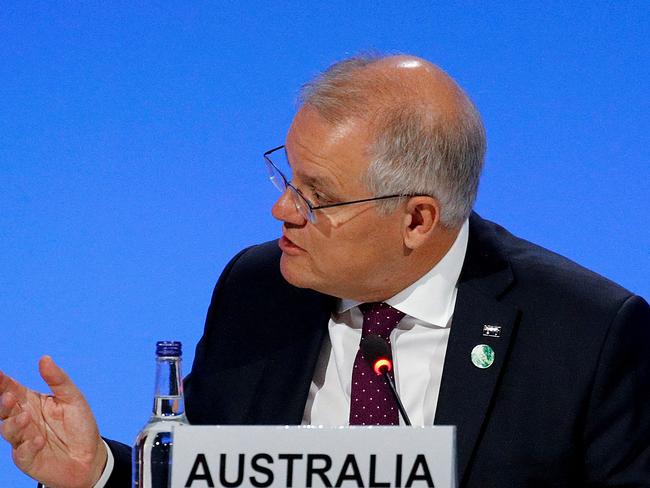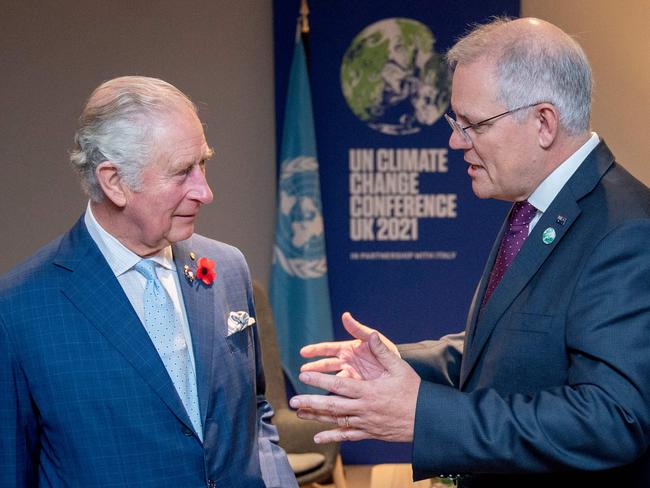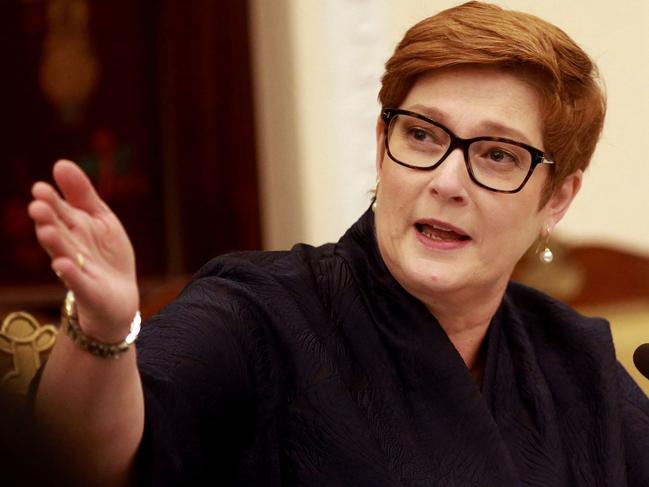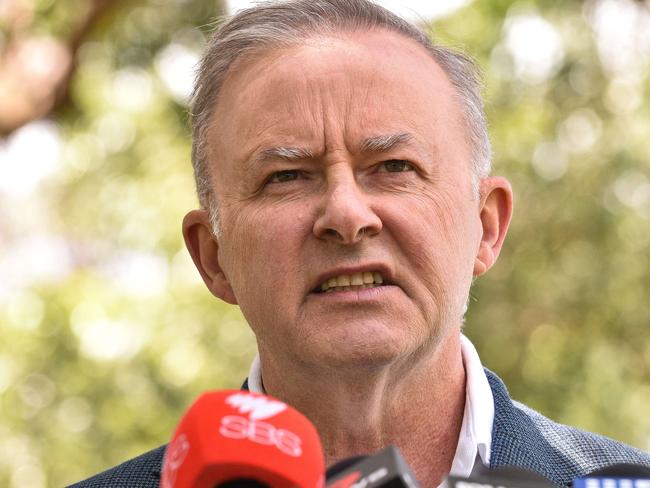COP26: Leaders agree to coal ‘phase-down’, as Australia faces global pressure to lift emissions target
The COP26 climate change summit has ended with historic agreement on the “phase-down” of coal, as Australia faces global pressure to lift its emissions target.
Environment
Don't miss out on the headlines from Environment. Followed categories will be added to My News.
Australia will be pressured to increase its interim targets for cutting greenhouse gas emissions next year after the final statement from the COP26 conference in Glasgow called on countries to “revisit and strengthen” their nationally determined contributions for 2030.
The clause virtually ensures the 2030 target will be a live issue in next year’s federal election.
Prime Minister Scott Morrison announced in Glasgow that Australia would get to net zero by 2050, but offered no increase on the 2030 target of cutting emissions by 26-28 per cent. Instead he provided projections showing Australia was on track to reduce its emissions by between 30-35 per cent by 2030.

The requirement for Australia to announce an increased 2030 target at the COP27 summit in Egypt in November 2022 is a headache for the government, which earlier in the week had expressed doubt the clause would make its way into the final version of the COP26 statement.
Another clause invited the Secretary-General of the UN to convene a meeting of world leaders in 2023 to further consider 2030 targets.
The final COP26 declaration also made a first-ever reference to coal and fossil fuel subsidies, although these clauses were watered down in the final draft after concerted lobbying from China and India.
Countries are encouraged to “accelerate” efforts towards the “phase-down of unabated coal power and inefficient fossil fuel subsidies,” the final statement read.

Coal is Australia’s second most valuable export, with recent figures showing earnings from the September quarter were $16.3 billion, up 80 per cent on the same period in 2020.
The modelling that underpins the government’s net zero strategy, released on Friday, presumed coal would still remain a strong industry in Australia in 2050, albeit at half the value it is today.
In a joint statement, Foreign Minister Marise Payne and the Minister for Industry, Energy and Emissions Reduction, Angus Taylor, said the Morrison government “will always stand up for and make decisions in Australia’s national interest, and we will do what’s right for rural and regional communities”.

“Australia’s economy is almost unique amongst developed countries, with an economy specialised in the production of energy and emissions-intensive commodities. We are the world’s fourth largest energy exporter, after Saudi Arabia, Russia and the United States,” the ministers said.
They stressed Australia’s emissions were falling faster than the OECD average.
The 2030 target was “fixed,” the Ministers said, but even so, Australia was “committed to meeting and beating it, as we did with our Kyoto-era targets”.

Asked whether the government would increase its 2030 emissions targets as a result of the COP26 statement, Health Minister Greg Hunt told the Insiders program: “We’ll continue to update our projections”.
“We have a clear target, and what we change is our projections,” he said.
The government’s approach was to “under-promise and over-deliver” on its commitments, Mr Hunt added.
Opposition Leader Anthony Albanese said the Prime Minister should explain “why is it we went to the Glasgow conference with Tony Abbott’s targets (from) 2015”.
Australia had worked with the likes of Saudi Arabia, Mexico and Brazil at the COP26 summit, Mr Albanese said, and was now “one of the few industrialised countries that refused to change the 2030 target”.

On Twitter, Greens leader Adam Bandt said next year will be a “climate fight” and his party would push the next government to “quit coal and gas”.
Mr Bandt also called for Australia to implement a 75 per cent emissions target by 2030 – an ambition even greater than Britain’s plans to slash emissions by 68 per cent by that time.
The Australian Conservation Foundation said Australia was drifting further and further away from its allies and trading partners, with “dire consequences for our climate, economy and jobs”.
“Australia has once again been part of the problem, not the solution. We are in the group of climate laggards – along with Russia and Saudi Arabia – that have gone to great lengths to water down the agreement surrounding coal power and subsidies,” ACF Climate Program Manager Gavan McFadzean said.

Other clauses from the final Glasgow statement – there were 97 in all – called on countries and companies to redouble their efforts in providing climate finance, noting “with deep regret” that the developed countries’ goal of “mobilising” US$100 billion per year for climate mitigation and adaptation had not been met. In particular the statement called upon wealthy countries to double their commitments to assist poorer nations with adaptation measures.
In their joint statement, Ms Payne and Mr Taylor said Australia has doubled its climate finance commitment to $2 billion over the next five years, and more than 70 per cent of that support was focused on climate resilience and adaptation.
Originally published as COP26: Leaders agree to coal ‘phase-down’, as Australia faces global pressure to lift emissions target



